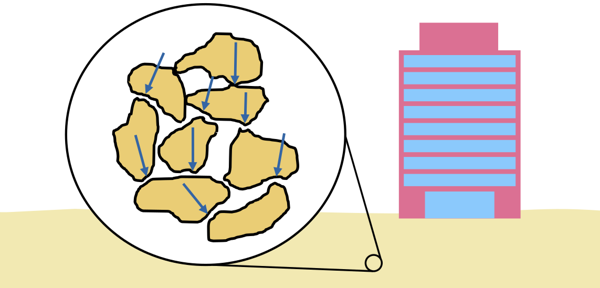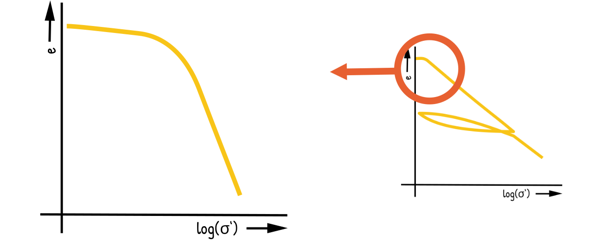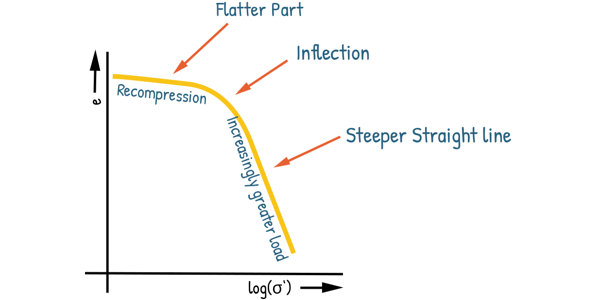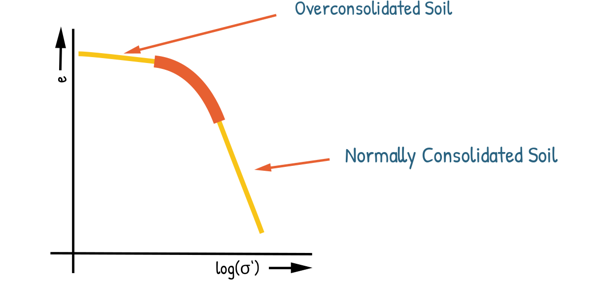Soil is a dynamic material that experiences various stresses and loads throughout its history. A soil is loaded, unloaded and reloaded and again unloaded and reloaded many times in its past.
The pressure experienced by the soil particles due to load acting on soil is called Effective stress.

The maximum effective stress that a soil has ever experienced in its history is called Preconsolidation stress and the soil is called Preconsolidated.

Preconsolidation Stress is denoted by many different names such as preconsolidation pressure, pre-compression stress, pre-compaction stress, preload stress and Over-Consolidation Pressure.
Preconsolidation in a soil deposit may be the result of both natural and human activities such as deposition, erosion, surface drying, construction or mining activities. Preconsolidation may occur when soil layer is consolidated under a large pressure of deposition, vegetation, construction and other things and later some of the load gets removed by dessication, erosion, dismantling and other processes.

Determination of the value, the magnitude of preconsolidation stress is crucial for geotechnical engineers, as only after its value is known we can estimate whether the soil will behave as normally consolidated soil or overconsolidated soil. And, knowing this is particularly important for finding the expected settlement of foundations and embankments.
Preconsolidation stress cannot be measured directly, but can be estimated using a number of different strategies and several empirical procedures that have been proposed. The most popular is the one suggested by A. Casagrande.
The Casagrande method is a graphical technique to estimate the preconsolidation stress from a void ratio-log effective stress curve obtained from a consolidation test. We have discussed this test in our previous post.
For the test, we collect the soil specimen from a natural soil deposit. First, we remove the overlying unwanted material from the soil layer. This may cause an expansion of the soil due to a reduction in its overburden pressure. Then, we take out our soil sample and place it in the cosolidometer. We load the sample with different weights and keep a record of change in the height of soil sample. Afterward, we unload the sample and continue to record its expansion.
With the obtained data we plot a graph between void ratio and effective stress.

Here we draw only part of the curve for better clarity, and full curve has been discussed earlier.
We observe this particular type of curve that begins with a flatter portion, followed by an inflection point, and then a straight line with a steep slope. The flatter part of the curve represents the soil’s recompression phase under loads lower than its historical maximum. The steeper part indicates that soil is compressed under loads greater than it has previously experienced.

In the flatter part, the soil is in an Overconsolidated State or Preconsolidated State. In the steeper part, the soil is in Normally Consolidated State.

When the soil changes from overconsolidated to normally consolidated state, the curve exhibits a transitional range that appears as a distinct knee or inflection point. The past maximum load, known as preconsolidation stress, lies somewhere within this range.
To obtain that we determine a point by the judgement of eye on the curve, say point A, where the curvature is maximum.
Then we draw a tangent to the curve at this point A and name it as AB.
At point A, we draw an horizontal line AC.

This way we obtain an angle between these two lines. Now we bisect this angle by drawing an angle bisector AD.
After that, we trace back the straight line portion of the curve so that it intersects the bisector AD at say point P.
We drop a vertical on the log(σ) axis and this is the preconsolidation stress σ’c of soil.

There are of course some limitations of this Casagrande method of obtaining the preconsolidation stress. We can obviously point out that interpretation of the point of maximum curvature is very subjective. Also the accuracy of determining preconsolidation stress with this method is highly influenced by the accuracy of consolidation test data received.
Still Casagrande method is a widely used as it is relatively simple technique.






